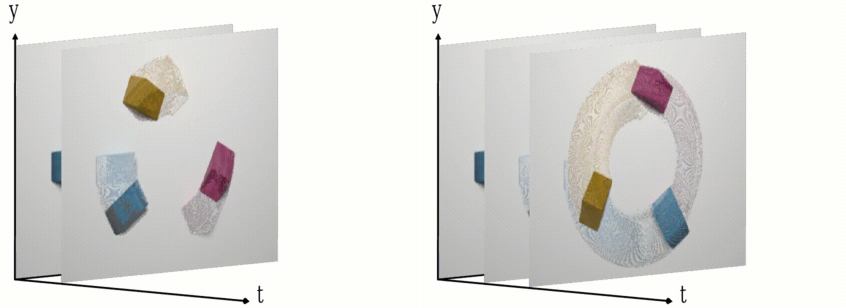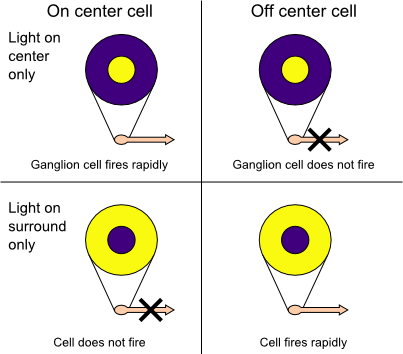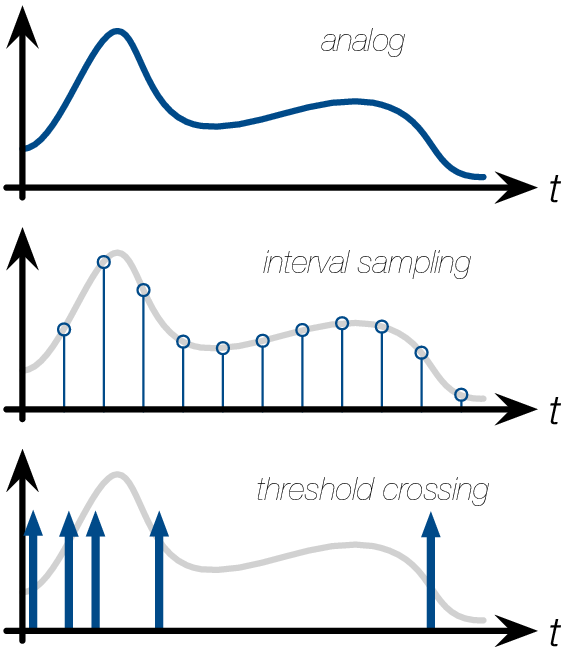Rethinking the Way our Cameras See#
We want machines to be able to see like us, and in that effort have created cameras. The field of modern computer vision is based on the common output format of those sensors: frames. However, the way we humans perceive the world with our eyes is very different. Most importantly, we do it with a fraction of the energy needed by a conventional camera. The field of neuromorphic vision tries to understand how our visual system processes information, in order to give modern cameras that same efficiency and it looks like a substantial shift in technology for machine vision.
We are so focused on working with data that modern cameras provide, that little thought is given about how to capture a scene more efficiently in the first place. Current cameras acquire frames by reading the brightness value of all pixels at the same time at a fixed time interval, the frame rate, regardless of whether the recorded information has actually changed. A single frame acts as a photo; as soon as we stack multiple of them per second it becomes a motion picture. This synchronous mechanism makes acquisition and processing predictable. But it comes with a price, namely the recording of redundant data. And not too little of it. As shown in Figure 1, redundant information about the background is captured even though it does not change from frame to frame, when at the same time, high velocity scene activity results in motion blur.

Image blur can occur in a frame depending on the exposure time.#
Taking Inspiration from the Human Visual System#
The human retina has evolved to encode information extremely efficiently. Narrowing down the stimuli of about 125 million light sensitive photoreceptors to just 1 million ganglion cells which relay information to the rest of the brain, the retina compresses a visual scene into its most essential parts. Photoreceptor outputs are bundled into receptive fields of different sizes for each retinal ganglion cell as shown in Figure 2. The way a receptive field in the retina is organised into center and surround allows ganglion cells to transmit information about spatial contrast, encoded as the differences of firing rates of cells in the center and surround. Retinal ganglion cells are furthermore capable of firing independently of each other, thus decoupling the activity of receptive fields from each other. Even if not triggered by external stimulus, a retinal ganglion cell will have a spontaneous firing rate, resulting in millions of spikes per second that travel along the optic nerve. It is thought that in order to prevent the retinal image from fading and thus be able to see the non-moving objects, our eyes perform unintentional rapid jumps called micro-saccades. This movement only happens once or twice per second, so in between micro-saccades, our vision system probably relies on motion. To put it in a nutshell, our retina acts as a pre-processor for our visual system, extracting contrast as an important stream of information that then travels along the optical nerve to the visual cortex. In the cortex it is processed for higher-level conscious processing of the visual scene.

Center-surround receptive fields in the mammalian retina.#
Inspired by the efficiency and complexity of the human visual system, Misha Mahowald developed a new artificial stereo vision system in the late 80s. She was one of Carver Mead’s students, a scientist at Caltech who spawned the field of Neuromorphic Engineering at that time. In his lab, Misha built what would become the first silicon retina in the early 90s. It was based on the same principle of center-surround receptive fields in the human retina, which emit spikes independently of each other depending on the contrast pattern observed.
Although Misha drafted the beginning of a new imaging sensor, the design did not provide a practical implementation at first. In response, the neuromorphic community simplified the problem by dropping the principle of center-surround pixels. Instead of encoding spatial contrast across multiple pixels which needed sophisticated circuits, the problem could be alleviated by realising a circuit that could encode temporal contrast for single pixels. That way, pixels could still operate individually as processing units just as receptive fields in the retina do and report any deviations in illuminance over time. While the first silicon retinas where fully analog, it would take until 2008 when the first refined temporal contrast sensors was published based on digital architecture, the event cameras as they are known today.
A Paradigm Shift in Signal Acquisition#
The new architecture led to a paradigm shift in signal acquisition, illustrated in Figure 3. Standard cameras capture absolute illuminance at the same time for all pixels driven by a clock and encoded as frames. One fundamental approach to dealing with temporal redundancy in classical videos is frame difference encoding. This simplest form of video compression includes transmitting only pixel values that exceed a defined intensity change threshold from frame to frame after an initial key-frame. Frame differencing is naturally performed in post-processing, when the data has already been recorded. Trying to take inspiration from the way our eyes encode information, event cameras capture changes in illuminance over time for individual pixels corresponding to one retinal ganglion cell and its receptive field.

Different sampling theorems. The ’real world’ is a collection of analog signals, which in order to store and digitise it we transform into numbers. Digital signal acquisition relies on regular sampling along the time axis. An alternative approach is level or threshold crossing, where the signal is sampled whenever it surpasses a threshold on the y-axis.#
If light increases or decreases by a certain percentage, one pixel will trigger what’s called an event, which is the technical equivalent of a cell’s action potential. One event will contain information about a timestamp, x/y coordinates and a polarity depending on the sign of the change. Pixels can trigger completely independently of each other, resulting in an overall event rate that is directly driven by the activity of the scene. It also means that if nothing moves in front of a static event camera, no new information is available hence no pixels fire apart from some noise. The absence of accurate measurements of absolute lighting information is a direct result of recording change information. This information can be refreshed by moving the event camera itself, much like a saccade.
Because of the considerable size of the circuit that enables temporal contrast for each pixel, it didn’t leave much room for the photo diode to capture incoming photons. The ratio of a pixel’s light sensitive area versus the total area is called fill factor and amounted to 9.4% for the first event camera. Modern CMOS (Complementary Metal Oxide Semiconductor) technology will enable a fill factor of above 90% at a fabrication process of 180 nm. With a reduced fill factor the photon yield will be low, which will in turn drive image noise. This was thus a major obstacle for event camera mass production early on. Nevertheless already this first camera was able to record contrast changes under moonlight conditions. New generations of event cameras use backside illumination in order to decouple the processing circuit for each pixel from the photo diode, by flipping the silicon wafer during manufacturing. Most of today’s smartphone cameras already use backside illumination in order to maximise illumination yield at the expense of fabrication cost.

An event-camera will only record change in brightness and encode it as events in x, y and time. Colour is artificial in this visualisation. Note the fine-grained resolution on the t-axis in comparison with the frame animation in Figure 1. Thanks to Alexandre Marcireau for the data. Visualisation has been created using Rainmaker.#
A Novel Sensor for Machine Vision#
Overall an event camera has three major advantages compared to conventional cameras: since pixel exposure times are decoupled of each other, very bright and very dark parts can be captured at the same time, resulting in a dynamic range of up to 125dB. The decoupled, asynchronous nature furthermore frees bandwidth so that changes for one pixel can be recorded at a temporal resolution and latency of microseconds. This makes it possible to track objects with very high speed and without blur as exemplified in Figure 4. The third advantage is low power consumption due to the sparse output of events, which makes the camera suitable for mobile and embedded applications. As long as nothing in front of the camera moves, no redundant data is recorded by the sensor which reduces computational load overall. It also relieves the need for huge raw data files. Current drawbacks for most commercially event cameras available today are actually further downstream, namely the lack of hardware and algorithms that properly exploit the sparse nature of an event camera’s data. Rethinking even the most basic computer vision algorithms without frames takes a considerable effort.
Over the years, event cameras have seen drastic improvements in spatial resolution and signal to noise ratio. The main generations of cameras are DVS, ATIS and DAVIS. Examples of companies that produce commercially available event cameras are Samsung, Prophesee, Celepixel and Sony/Insigthness. Most commercially available event cameras are still large in size, but small form factor version have been developed too. The first commercially available single-chip neuromorphic vision system for mobile and iot applications is called Speck [1], which combines a dvs and the Dynap-se neuromorphic cnn processor. The rise of the event camera has been relatively slow, as larger gains in power efficiency are being made by focusing on the processing of image data further downstream, notably on a gpu. This trend however is also likely to saturate at some point and will make it worth to further explore and employ this novel image sensor.
